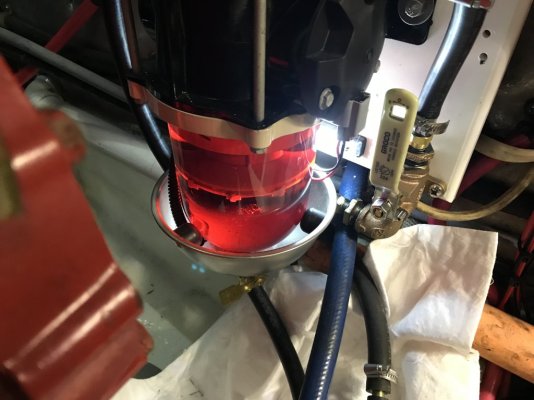dhays
Guru
- Joined
- May 26, 2015
- Messages
- 9,575
- Location
- Gig Harbor, WA
- Vessel Name
- Kinship
- Vessel Make
- 2010 North Pacific 43
If you believe Tony Athens, you are NEVER supposed to prefill the filter.
I bought a "Rapid Primer" from dieselfiltersonline.com before my last Racor change. It worked quite well. I found it worked quite well. Yeah, it is too expensive, but it does the job in a nice low-tech way. I don't like keeping containers of diesel full on the boat, so this is an easy way to fill the filter without having to keep diesel bottles on board.

